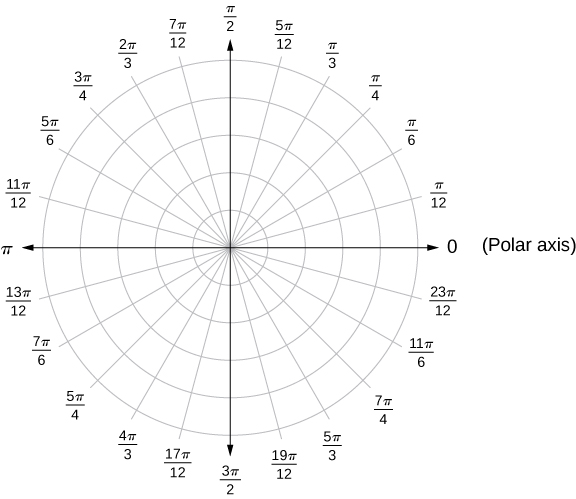- The quiz: several important issues.
- Use composition; write out the series, to see what the terms look like.
- Use parentheses: a bunch of you wrote \(2n+1\) when you meant \(2(n+1)\).
- Both the AST and Taylor error estimate give the same thing! \(\frac{1}{120}\).
- Did you notice that I gave you a few hints in the second and third problems to help you with the first?
- The Key
- Your exam this week will cover all of your sequences and series
stuff. You will be allowed a cheat sheet.
I'm going to try to make Thursday's portion independent of calculators -- but we'll see. Bring one, just in case.
- You also have a lab portion of the exam on Friday.
- We will review tomorrow, and maybe do a little about polar coordinates if we finish the review early.
- How did the lab "sample exam" go?
- We return to finish our discussion of the calculus of parametric curves, with Vol 2, Sec 7.2
- A bit of a review: tangent lines require computing
derivatives, of course. First derivatives of \(dy/dx\)
will be computed using the chain rule:
\[ \frac{dy}{dx} = \frac{dy}{dt}\frac{dt}{dx} = \frac{\frac{dy}{dt}}{\frac{dx}{dt}} \]
If you read along in our text, you'll see that, from the motion perspective, we are often more concerned with \(dx/dt\) and \(dy/dt\). However, it is often of interest to find out where a particle is at a particular point along the "backbone curve" \(y=f(x)\), along which the motion proceeds.
Let's think about uniform circular motion, for example, with \[ \begin{array}{c} {x(t)=\cos(t)}\cr {y(t)=\sin(t)} \end{array} \]
- Where does the motion begin (i.e. where are we when \(t=0\))?
- In what direction does the motion proceed?
- If we cut the string how will the object fly away?
- What is the slope of the tangent line anywhere (as a function of time)?
- So how can we write the tangent line at a given moment in time, \(T\)?
We have a point: \((x(T),y(T))\); and we can calculate the slope, via \[ m(T) = \frac{dy}{dx} \bigg\rvert_{t=T} = \frac{\frac{dy}{dt}}{\frac{dx}{dt}} \bigg\rvert_{t=T} \]
Then \[ y-y(T)=m(T)(x-x(T)) \]
- A note about the second derivatives of $y$ with respect to time (acceleration, or concavity).
Suppose we also want to compute the second derivative, \[ \frac{d^2y}{dx^2} \]
when faced with parametric equations $x=f(t)$ and $y=g(t)$.
It turns out to be just another application of the chain rule. The first derivative gets us started:
\[ \frac{dy}{dx} = \frac{\frac{dy}{dt}} {\frac{dx}{dt}} \equiv m(t) \] For the second derivative, we simply do it again -- but now we already know $\frac{dy}{dx}$ as a function of time (I called it $m(t)$ above), so \[ \frac{d^2y}{dx^2} = \frac{d}{dt} \left(\frac{dy}{dx}\right) \frac{dt}{dx} = \frac{\frac{d}{dt} \left(m(t)\right)} {\frac{dx}{dt}} = \frac{m'(t)} {\frac{dx}{dt}} \] It's a two-stage process. And obviously we could continue, computing third, fourth, etc. derivatives for the path in space.
- Note that finding the area under a parametric curve is also just an exercise in the application of the chain rule (Theorem 7.2 in the text): \[ A = \int_a^b y(x) dx = \int_{t_a}^{t_b} y(x(t)) \frac{dx}{dt} dt \] where \(x(t_a)=a\) and \(x(t_b)=b\)
- Materials:
- A bit of a review: tangent lines require computing
derivatives, of course. First derivatives of \(dy/dx\)
will be computed using the chain rule:
- And now for a different sort of parameterization: Vol 2, Sec 7.3: Polar Coordinates
- We're just "changing coordinates" -- when one system makes more
sense than another. If things are orbiting some center, say, then it
makes more sense to use a polar coordinate system, like the one below,
which shows how the angle \(\theta\) is measured:

If \(r\) is the distance of a point \((x,y)\) from the origin, then we can write that
\[ x(r,\theta) = r\cos(\theta) \hspace{1in} y(r,\theta) = r\sin(\theta) \]
- Materials:
- We're just "changing coordinates" -- when one system makes more
sense than another. If things are orbiting some center, say, then it
makes more sense to use a polar coordinate system, like the one below,
which shows how the angle \(\theta\) is measured:
- Prof. Roger Zarnowski's cool series tools handout
- Wolfram Alpha
- Mathematica on-line is an option, if you are at a computer without Mathematica installed.